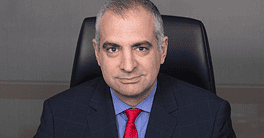With a growing and ever more digitally native client base, banks offering products and services to high-net-worth and ultra-high-net-worth clients are stepping up their game.

Technology is doubtless a major enabler for today’s financial institutions as they seek to streamline operations, flex Big Data, gain competitive advantages and improve customer journeys—and there’s a growing appetite for the efficiencies that all parties can gain in the process. Adopting and integrating technology is paramount for modern banks and financial institutions. But to what degree is this the case for more traditional areas of the banking world, where personal connections have always been so key? Private banking is one such area.
According to the latest Altrata Billionaire Census, published in June 2022, the global billionaire population rose by 3.3% to 3,311 individuals in 2021, with total wealth surging by 17.8% to a record $11.8 trillion. At 1,035 billionaires, North America tops the ranks, with China, Germany, India and the UK rounding out the top five regions for billionaire wealth. Expanding by almost 20%, India notably jumped four places in the number of billionaires over the period.
Wealth management and financial services are all about trust, says Mumbai-based Anupam Guha, head of Private Wealth Management at ICICI Securities. But trust can only be built through positive client experiences.
“Private banking requires an omnichannel experience through the touchpoints of mobile, web and the relationship team,” he explains. “We are a large organization with a depth of data. And with the usage of smart analytics, we realized that we could leverage all that to really drive bespoke engagement and truly relevant product ideas for our clients.”
Maintaining pace when it comes to innovation is central to being able to provide this “high-tech” experience, but with a personal touch at the heart of these interactions.
Significant growth has also been seen across the markets served by Santander Private Banking (SPB), which is present in 11 countries with a focus on Europe and Latin America. As part of the bank’s Wealth Management & Insurance Division (WM&I), the team’s main focus is on Europe and Latin America, telling Global Finance that personal connections are key to their interactions and business.
“In this context, we envision technology to deliver tailored advice and services, enhancing our customer experience within the context of the personal experience. In private banking, we are continuously working on the evolution of our digital fronts for clients and for bankers.”
The team sees a “story of two tales” in its footprint. “While the English-speaking countries have always been more mature digitally and more reliant on digital tools, emerging markets still need a more personal touch. But both worlds need a combination of technology and people. There are some exceptions to this, like Brazil, which is extremely digital.”
New Markets, New Tools
It may come as no surprise that the greatest concentration of private banking customers hail from metropolitan cities. But, as Guha points out, ICICI also has a sizable client base from the more remote areas of the country, just with different needs. “Wealth is being created in various pockets of India. Therefore, it is important for us to be present in these tier-two and tier-three cities with bespoke propositions,” he says. “A hyper-personalized digital platform becomes an important tool to deliver the proposition to various segments of clients and build scale.”
In addition to these geographical nuances, generational distinctions can be observed in the way technology is being taken up in the private banking arena. Among HNW digital natives, Gen X clients show a greater acceptance of online platforms and mobile apps to access financial information and to transact. Gen Z clients, meanwhile, are also more likely to use social media and other online sources to conduct investment research, according to Guha. “Providing quality learning material digitally becomes important to engage this segment,” he says.
The majority of ICICI’s private banking customers are millennials and Gen Xers, for whom omnichannel engagement works well. “These customers are comfortable with technology and are looking for exclusive product ideas,” he adds. “Retirement planning also becomes an important part of our engagements.”
Baby boomers are, understandably, still more comfortable with the traditional methods of investing, and still want to work with a relationship manager as they explore ways to embark on retirement or make plans to transfer wealth.
It stands to reason that the younger the customer, the more they rely on digital tools. But improved access to research and solutions has broadened the reach of private banking solutions across the board.
“The use of technology has led to the development of new financial products and services, such as one-click-execution baskets and robo-advisories—which are becoming increasingly popular with investors of all generations,” Guha enthuses. “Overall, technology has greatly increased the efficiency and accessibility of research, thereby democratizing private banking solutions to investors from all generations.
“As private bankers, it’s our job to make our clients understand the risks associated with various investment options and guide them to achieve the best risk-adjusted return, regardless of their age or level of familiarity with technology.”
Geographical and generational nuances aside, what else is at play in the way private banking clients engage with technology and the private banks behind it?
In the view of Ana Maria Beznoska, head of Erste Private Banking Romania, emotion is the main factor influencing customer behavior—playing an even greater role than motivation.
“There is scientific proof which confirms that emotions and feelings will always be precognitively formed before any information processing takes place,” she says. “In order to build strong relationships between consumer and brand, it must incorporate emotionally high-level content, creating strong emotional ties. We use technology, but we cannot use it well without people, because robots can read and understand data, but only humans can read and understand attitudes and emotions.”
It is the strength of this emotional bond that she believes drives customer loyalty.
“In terms of customers’ expectations, at Erste Private Banking, the use of technology became an everyday occurrence and [the bank’s mobile app] George became the customer’s bank in their pocket,” she explains.
The George “ecosystem” is subject to continuous improvement, promising a completely different experience to that offered by the so-called Gang of Four—the tech giants playing in the banking space: Google, Apple, Facebook and Amazon, or GAFA.
Through its multi-banking functionality, George provides a single point of access to a consolidated overview on all the accounts a customer holds across multiple banks and other financial institutions.
“The adoption of George was a success throughout all the segments in the bank, changing usage behavior, with in-branch transactions representing nowadays just 4% out of the total number of transactions,” Beznoska explains.
This mirrors a growing recognition among private banks of how better use of data and novel, emerging technologies can improve the customer journey without sacrificing highly valued human-to-human customer service.
“Technology will remain part of our business strategy for the coming years, but it will be an optimal mixture between AI and human touch. Our commitment is to maintain an equilibrium and to pursue the happiness of our employees, while at the same time targeting a state-of-the-art digital experience for our clients,” she adds.
SPB, meanwhile, is also planning to roll out AI to better serve its client base, part of an overall strategy of expanding its digital capabilities—offering instant information while ensuring that its bankers are close to clients to provide the human experience.
“Within private banking, we are continuously improving our digital fronts for both clients and bankers to offer the best user experience and maximize the efficiency of our operations,” the Santander team explains. “On top of this, we are highly focused on improving digital investment platforms in all the countries we operate in. We are also working on identifying AI tools that can complement our client servicing.”



